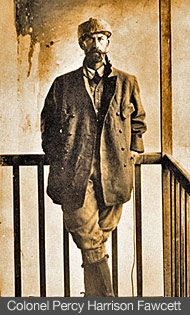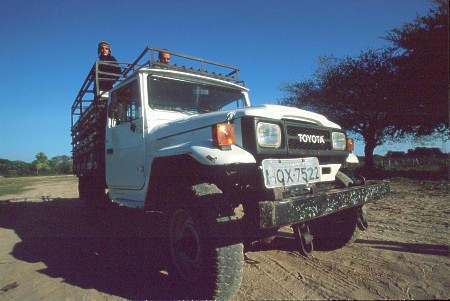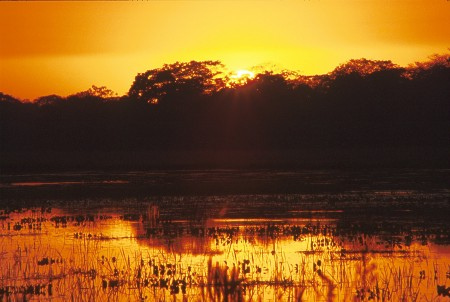History: The Real Indiana Jones
The true story of Colonel Fawcett is one that captured the imagination of school boys and adventurers through the middle part of the 20th Century. Even recently, it has inspired a best-selling book (David Grann's The Lost City of Z) and was set to become a major film starring Brad Pitt.
Colonel Percy Harrison Fawcett is one of the most famous and controversial explorers of the 20th Century. The British Royal Geographic Society nominated him as an independent surveyor to clearly define the borders in the remote and heavily forested territory between Bolivia, Peru and Brazil. This was needed to avoid conflict and potential war, since these areas were then valuable as the sole source of rubber, which commanded high prices and was essential to industry. Fawcett's surveys were a great success - and his stories of wild remote locations, lawless frontier towns, encounters with hostile indians, strange creatures, deprivation and unknown dangers enthralled the British public. His description of the remote Ricardo Franco (Huanchaca) plateau in Bolivia reputedly inspired his friend, Sir Arthur Conan Doyle, to write The Lost World. Fawcett was also friends with H. Rider Haggard, author of King Solomon's Mines. Haggard presented Fawcett with a small mysterious basalt statue said to have come from a lost civilisation somewhere in central Brasil.
Fawcett operated from bases in Riberalta and (later) in Corumbá. Indeed, given the old architecture and cobbled streets of Corumbá, it isn't hard to imagine how it would have been in Fawcett's time.

At last, in 1925, Fawcett believed that he'd pieced together the clues - and mounted a last expedition, together with his son Jack, and a friend Raleigh Rimmell. Fawcett's belief was that a small team stood a better chance of success - living off the land and being more mobile. They left with much fanfare, having secured funding from a North American newspaper alliance on the condition that they send back dispatches and reported the discoveries made. Their initial dispatches were widely published as a result.
The team arrived in Rio de Janeiro, travelled by rail to Corumbá, and then by river steamer up to Cuiabá (as there were still no roads to the city until the 1930s). Finally, they set out on foot - crossing the cerrado, rivers and scrublands headed towards the Xingú. Since there were no radios or telegraph, dispatches were sent back with the hired horsemen who accompanied them on the first part of the journey. The final report was filed from a location called Dead Horse camp (where Fawcett's horse had died on a previous expedition) on 29 May 1925.
Disappearances in wild and remote areas of the Brazilian Amazon weren't all that unusual as there were innumerable dangers - with an unforgiving environment, illness, starvation, wild animals, hostile indians, or any combination thereof. Nonetheless, the disappearance of such a public and well-known individual sparked huge interest. Various European travellers into the area gave (admittedly inconsistent) reports with a lost English traveller who had been captured by Indians. The North American Newspaper Alliance and several other private groups mounted expeditions of their own, attempting to find Fawcett or learn what happened.
Perhaps the most signifiant of these was led by George Miller Dyott in 1928. In contrast to Fawcett's philosophy of traveling light, Dyott's expedition consisted of 26 men (including local porters and guides), plus 74 oxen and mules to transport their three tons of food and equipment. This equipment included a radio for them to report back to the outside world. Dyott's expedition lasted several months and, although the specific evidence it collected was later called into question, it confirmed the difficulties which travellers faced with Indian tribes in the Xingú area. Kidnapping or death at the hands of one of these tribes was very likely. Several later expeditions run by private adventurers (including one minor Hollywood film star) ran into exactly this fate. In the meantime, back in Hollywood, the character of an explorer archaeologist searching for lost treasure became a mainstay of movie serials and stories. These, in turn, are said to have provided the inspiration for George Lucas' Indiana Jones.
The combined deaths and disappearances from all the expeditions searching the area for traces of Fawcett has been estimated at around 100 people. Stories about supposed encounters with Fawcett, or white indians fathered by his son Jack, continued to come out of the area though until the 1950s. One mystical Brazilian sect, located in the Mato Grosso town of Barra do Garças, have even adopted Fawcett as a god, believing that he is still living in the nearby hills (Serra do Roncador), having discovered a gateway into another dimension and being transformed into a mystical being. According to them, he will eventually return and announce hits discoveries to the world. Even today, film documentary teams and writers still regularly visit the region to add their interpretation of the Fawcett legend.
Interestingly, despite our better knowledge of the region, Fawcett's lost city and his theories of a lost civilization mightn't have been unfounded. An aerial survey along Fawcett's intended route by Fawcett's surviving son, Brian Fawcett, in the 1950s concluded that that Fawcett's lost city was likely to have been Sete Cidades in Piauí. This is an unusual grouping of natural rock formations which strongly resemble an ancient ruined city, and could easily have been the source of such tales. Archaeologist and anthropologist, Michael Heckenberger, also recently uncovered evidence suggesting that the Indians of the region really were once part of a greater civilisation. In pre-Colombian times, the tribes were much more numerous, with farming and agriculture, and a network of villages linked together with wide roads. It was a civilisation - just not necessarily in the form that Fawcett imagined.
Multimedia Links










Image credits: Colonel P.H. Fawcett in his study. Photographer unknown.
Photos: Bandeirante, Sunset, and Kingfisher (Andrew Mercer)
Pantanal Escapes